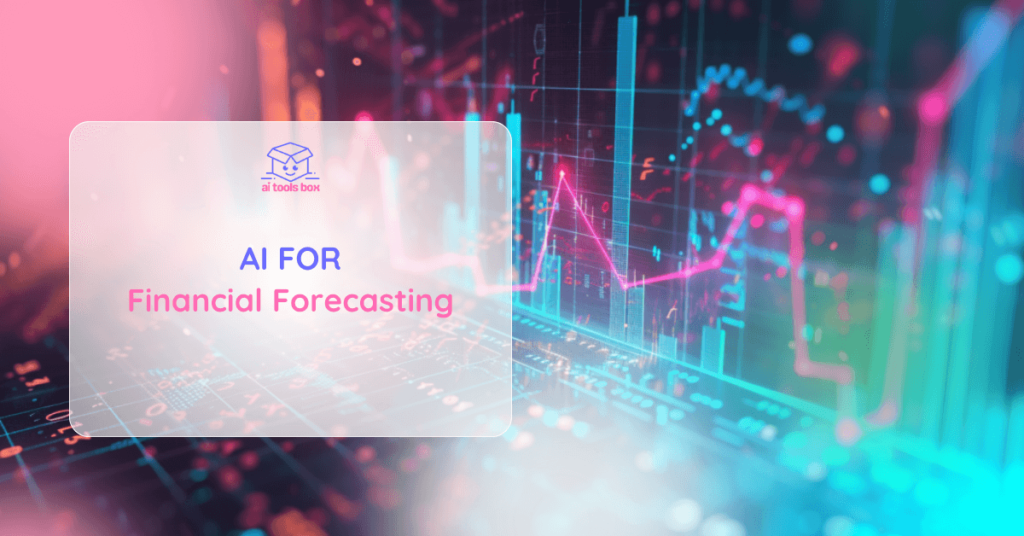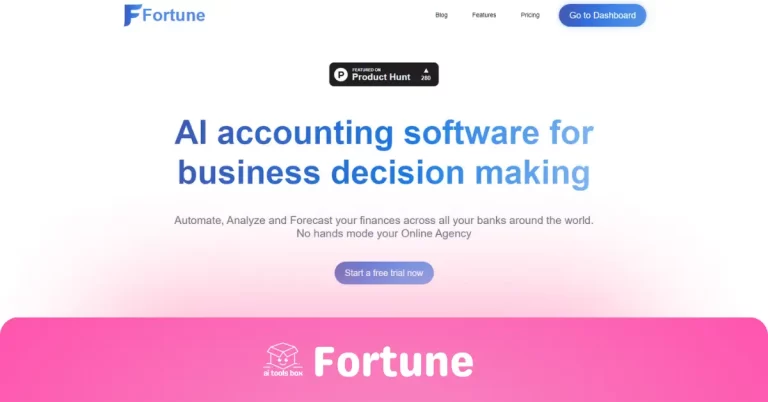Artificial Intelligence (AI) is revolutionizing the landscape of financial forecasting. Its emergence marks a pivotal shift in how financial experts and businesses predict future trends and make critical financial decisions. AI's advanced algorithms and data analysis capabilities offer unprecedented accuracy and efficiency, transforming the traditional methods of financial planning.
In this article, you will learn:
- How AI is redefining the approach and accuracy of financial forecasting.
- The significant impact of AI on financial planning and trend analysis.
- Emerging trends and future possibilities in AI-driven financial forecasting.
As we delve into the world of AI and its profound implications on financial forecasting, prepare to uncover insights that could redefine your financial strategies and planning for the future.
Understanding AI in Financial Forecasting
Artificial Intelligence (AI) has become a cornerstone in modern financial forecasting, but understanding its role requires a look at its foundational concepts. AI refers to the simulation of human intelligence in machines, designed to think and learn like humans. In the realm of financial forecasting, AI utilizes complex algorithms and machine learning techniques to analyze vast amounts of data, identify patterns, and predict future financial trends.
The journey of AI in finance has been evolutionary. Initially, AI's role was limited to basic data analysis and automation tasks. However, with advancements in technology, AI systems have grown in sophistication, now capable of performing intricate trend analysis and offering predictive insights that were once beyond human capability.
At the intersection of AI, financial planning, and trend analysis lies a unique synergy. AI enhances financial planning by providing more accurate predictions, thus enabling better investment decisions and risk management. Trend analysis, too, has been revolutionized. AI can sift through historical financial data, market trends, and global economic indicators to provide a nuanced understanding of future market movements.
In this section, we delve deeper into:
- The fundamentals of AI in financial forecasting.
- The historical evolution of AI in the financial sector.
- How AI bridges the gap between financial planning and trend analysis.
This exploration will shed light on how AI is not just an adjunct tool but a transformative force reshaping the financial forecasting landscape.
Key Benefits of AI in Financial Forecasting
AI in financial forecasting brings a multitude of advantages that revolutionize how financial professionals approach their work. Here are some of the key benefits:
- Accuracy in Predictions and Decision-Making: One of the most significant advantages of AI is its ability to analyze large datasets with precision and speed, leading to highly accurate forecasts. AI algorithms can detect subtle patterns and correlations in financial data that might be missed by human analysts. This precision in predictions aids in making more informed and effective financial decisions.
- Speed and Efficiency in Data Analysis: AI's ability to process and analyze vast amounts of data at an unprecedented speed is a game-changer. This rapid analysis allows for real-time financial forecasting and instant adjustments to market changes, giving businesses a competitive edge.
- Customization and Adaptability to Market Changes: AI systems are not just fast and accurate; they are also adaptable. They can be trained to understand specific market conditions and tailor their analysis to the unique needs of a business or sector. This adaptability is crucial in a world where financial markets are constantly evolving.
In this section, we have explored:
- How AI enhances the precision of financial forecasts.
- The efficiency AI brings to data processing and analysis.
- AI's ability to adapt to and customize for specific market conditions.
These benefits highlight why AI is not just an addition to financial forecasting but a transformative element that is reshaping the field.
Case Studies and Real-World Applications
To understand the practical impact of AI in financial forecasting, it's instructive to look at real-world applications and case studies. These examples showcase how AI is being utilized effectively in the financial sector:
- Automated Trading Systems: AI algorithms are used extensively in automated trading systems. These systems analyze market data to make predictive decisions, often executing trades at a speed and volume unattainable by human traders. For instance, hedge funds employ AI to spot investment opportunities and trends, leading to more profitable trades.
- Risk Management: Financial institutions leverage AI to improve their risk assessment processes. By analyzing historical data and market trends, AI can predict potential risk factors more accurately and help in devising effective risk mitigation strategies. Banks, for instance, use AI for credit scoring, assessing borrowers’ risk levels more precisely.
- Personalized Financial Advice: AI-powered robo-advisors provide personalized investment advice to clients based on their financial goals and risk tolerance. These systems analyze a vast array of investment options to offer tailored advice, making sophisticated financial planning accessible to the average investor.
These case studies reveal:
- The effective use of AI in automated trading and investment.
- AI's role in enhancing risk management strategies.
- The democratization of financial advice through AI technologies.
Each example highlights AI's transformative role in making financial forecasting more efficient, accessible, and tailored to individual needs.
Challenges and Limitations
While AI in financial forecasting offers numerous advantages, it's important to acknowledge the challenges and limitations inherent in its use. Addressing these concerns is crucial for a balanced understanding and effective implementation of AI technologies.
- Complexity and Interpretability: AI systems, especially those based on deep learning, can be incredibly complex. This complexity often leads to a lack of interpretability or the ‘black box' problem, where it's difficult to understand how the AI arrived at a particular decision. This can be a significant issue in financial contexts where transparency and accountability are paramount.
- Data Quality and Bias: AI systems are only as good as the data they are trained on. Poor quality, biased, or incomplete data can lead to inaccurate predictions. In financial forecasting, where decisions can have substantial economic impacts, ensuring data integrity is crucial.
- Regulatory Compliance and Ethical Considerations: The financial sector is heavily regulated, and ensuring that AI systems comply with these regulations is a challenge. Additionally, ethical considerations, such as the potential for AI to exacerbate market inequalities or impact employment in the financial sector, must be addressed.
In this section, we have discussed:
- The complexity and interpretability challenges of AI in finance.
- The critical role of data quality and the risk of bias in AI systems.
- The importance of regulatory compliance and ethical considerations in AI implementation.
Understanding these challenges is essential for businesses and financial professionals to harness the benefits of AI responsibly and effectively.
Future Trends and Developments
The future of AI in financial forecasting is marked by promising trends and potential developments that could further revolutionize this field. Here's what to anticipate:
- Advancements in AI Technology: Ongoing research in AI and machine learning is likely to produce even more sophisticated algorithms. These advancements will enhance the accuracy and efficiency of financial forecasting, enabling more nuanced and forward-looking insights.
- Integration with Other Emerging Technologies: AI is expected to increasingly integrate with other technologies like blockchain and the Internet of Things (IoT). This synergy could lead to more secure and comprehensive financial analysis systems, combining different data sources for a holistic view of financial markets.
- Focus on Ethical AI and Regulation: As AI becomes more prevalent in financial forecasting, there will be a growing focus on developing ethical AI practices and robust regulatory frameworks. This will ensure that AI is used responsibly, addressing concerns like data privacy, bias, and transparency.
Looking ahead, we can expect:
- Continuous improvements in AI algorithms for more precise forecasting.
- Greater integration of AI with blockchain and IoT for enhanced analysis.
- A stronger emphasis on ethical AI and regulatory compliance in the financial sector.
These developments not only suggest a bright future for AI in financial forecasting but also underscore the importance of staying informed and adaptable to these evolving technologies.
Conclusion
AI's role in financial forecasting represents a paradigm shift, offering accuracy, efficiency, and adaptability. Throughout this article, we've explored how AI is redefining financial forecasting, its impact on financial planning and trend analysis, and emerging trends in AI-driven financial forecasting.
For those looking to stay ahead in the dynamic world of finance, exploring AI technologies and strategies is a natural next step. Embracing AI's potential will not only enhance current forecasting methods but also prepare financial professionals and businesses for future advancements in this field.





